Houseplants bring life, color, and a calming presence into our homes — but like any living thing, they need regular care to stay healthy. One often-overlooked aspect of plant care is pruning. While many new plant owners hesitate to snip away at their beloved greenery, pruning houseplants is essential for healthy growth, appearance, and longevity.
In this comprehensive guide, you’ll learn why pruning is important, when to prune, the right tools to use, and how to safely prune different types of houseplants for the best results.
Why Prune Houseplants?
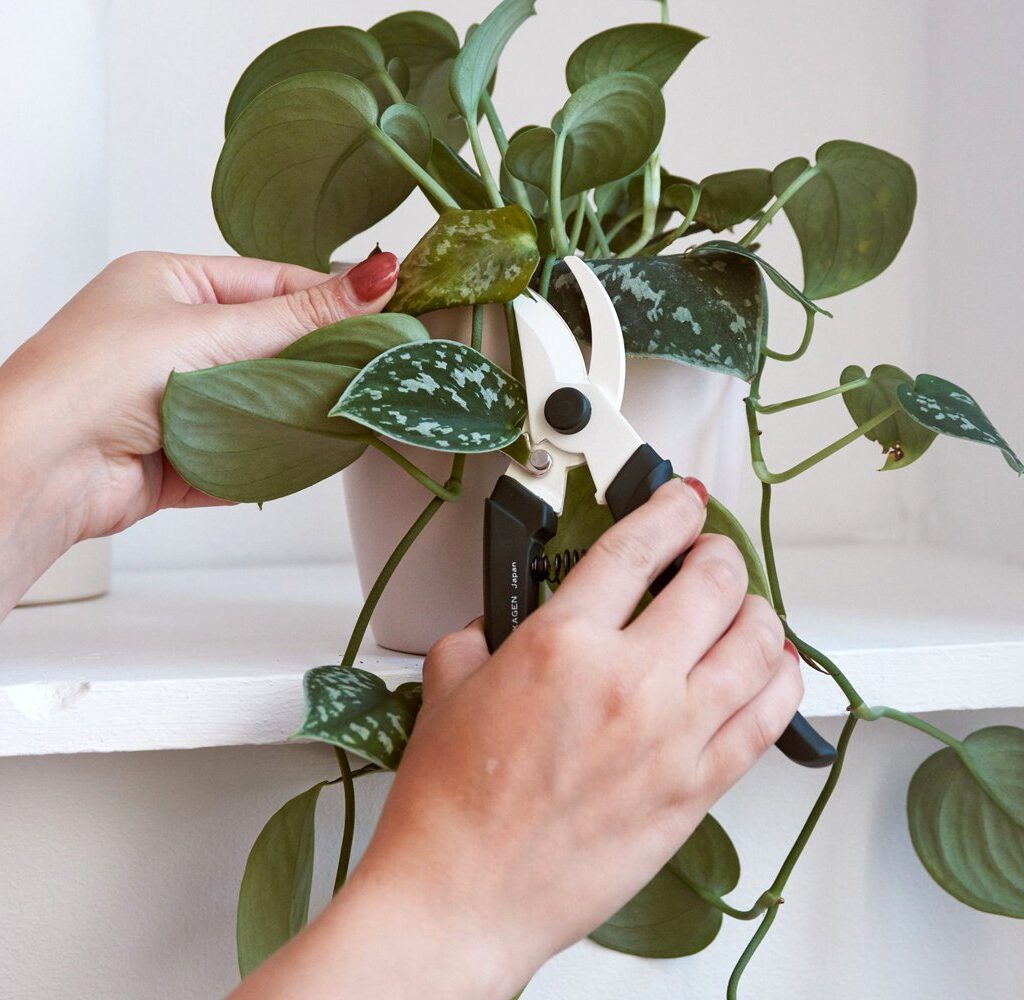
Pruning isn’t just about keeping your plants neat — it plays a vital role in plant health and development. Here’s why it matters:
✔ Encourages new, healthy growth
✔ Removes dead, yellowing, or diseased leaves
✔ Prevents overcrowded, leggy, or unbalanced growth
✔ Shapes the plant for a fuller, bushier appearance
✔ Increases airflow around leaves and stems
✔ Helps manage plant size for small indoor spaces
✔ Promotes better flowering in some plant varieties
A well-pruned plant is not only healthier but also more attractive and easier to manage indoors.
When to Prune Houseplants
While houseplants can be pruned year-round, the best time is typically during their active growing season, which runs from spring to early fall. Pruning at this time allows plants to recover quickly and sprout fresh growth.
You should prune immediately if you notice:
- Yellowing, browning, or dead leaves
- Stems affected by pests or disease
- Overcrowded, leggy, or misshapen growth
- Spent flowers or seed heads
- Roots emerging from the soil surface or drainage holes
Tip: Avoid heavy pruning during winter dormancy, as most plants grow more slowly then.
Essential Tools for Pruning Houseplants

Using the right tools ensures clean, healthy cuts and reduces the risk of damaging the plant.
Recommended tools:
- Sharp pruning shears or garden scissors
- Small, sharp scissors for delicate plants
- Clean, soft cloth or wipes for cleaning tools
- Isopropyl alcohol or disinfectant for sterilizing blades
Always sterilize tools before and after pruning to prevent the spread of disease between plants.
How to Prune Houseplants: Step-by-Step
Remove Dead or Yellowing Leaves
Start by snipping off any dead, yellow, or brown leaves at their base where they meet the stem. This immediately improves the plant’s appearance and prevents disease spread.
Pro tip: Remove leaves that show signs of mold, spots, or pests as soon as you spot them.
Trim Leggy or Overgrown Stems
Leggy stems are long, bare, and sparse, often caused by insufficient light. Prune them back to a healthy leaf node (the small bump where leaves or new shoots grow).
How to prune leggy stems:
- Identify the overgrown section.
- Cut just above a healthy leaf node to encourage bushier growth.
- For bushy plants like pothos or philodendron, trim back several stems for an even look.
Shape and Size the Plant
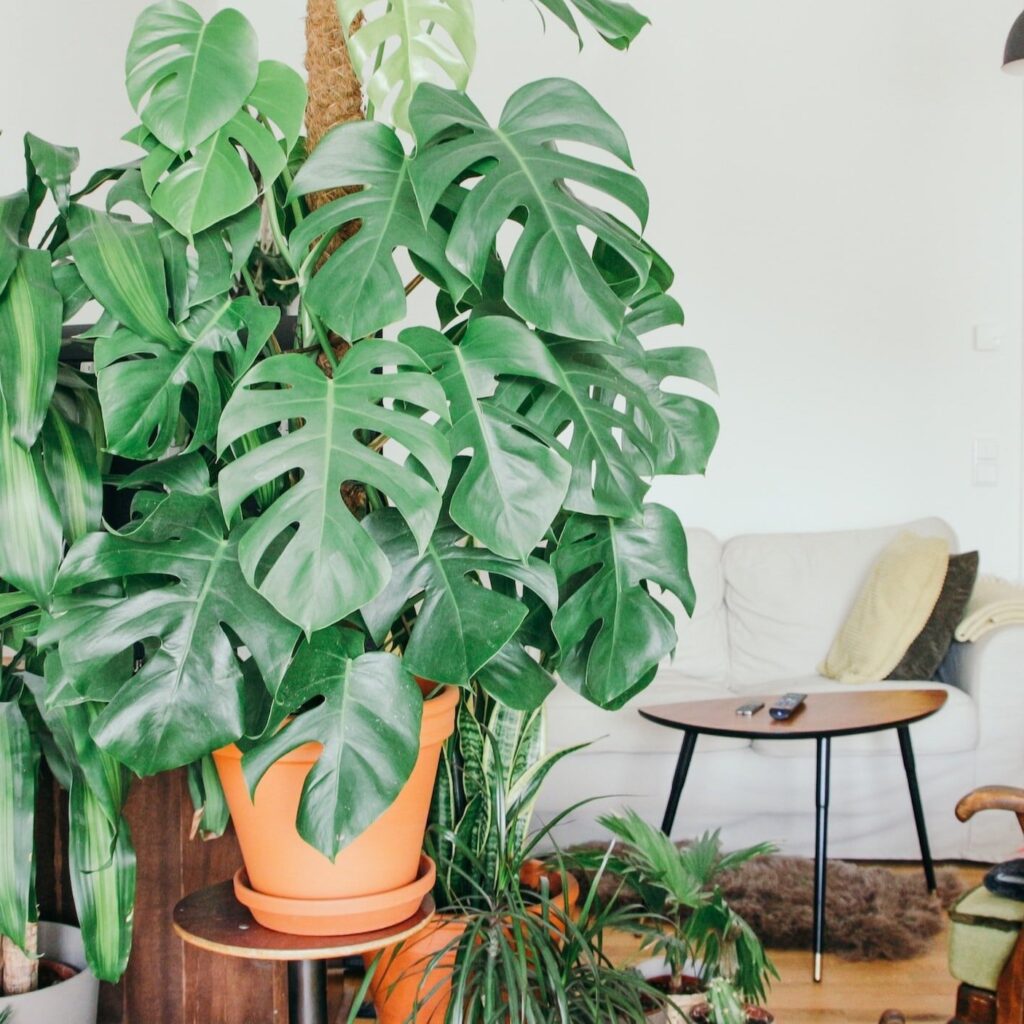
If your plant is getting too large or uneven:
- Trim back longer stems to match the rest of the plant’s shape.
- For rounded plants like spider plants or jade plants, aim for a balanced, symmetrical form.
- Remove any stems crossing over others to improve air circulation.
Tip: Step back occasionally while pruning to assess the overall shape.
Deadhead Spent Flowers
For flowering houseplants like African violets, peace lilies, or geraniums:
- Snip off spent flowers at the base of their stalk.
- Regular deadheading promotes continuous blooming and prevents wasted energy on seed production.
Control Root Growth (If Needed)
If you notice roots circling the inside of the pot or emerging from drainage holes, it’s a sign your plant may need root pruning or repotting.
How to root prune:
- Remove the plant from the pot.
- Gently loosen excess soil.
- Trim back overly long or damaged roots.
- Replant in fresh soil and a slightly larger container if needed.
Pruning Tips for Specific Houseplants
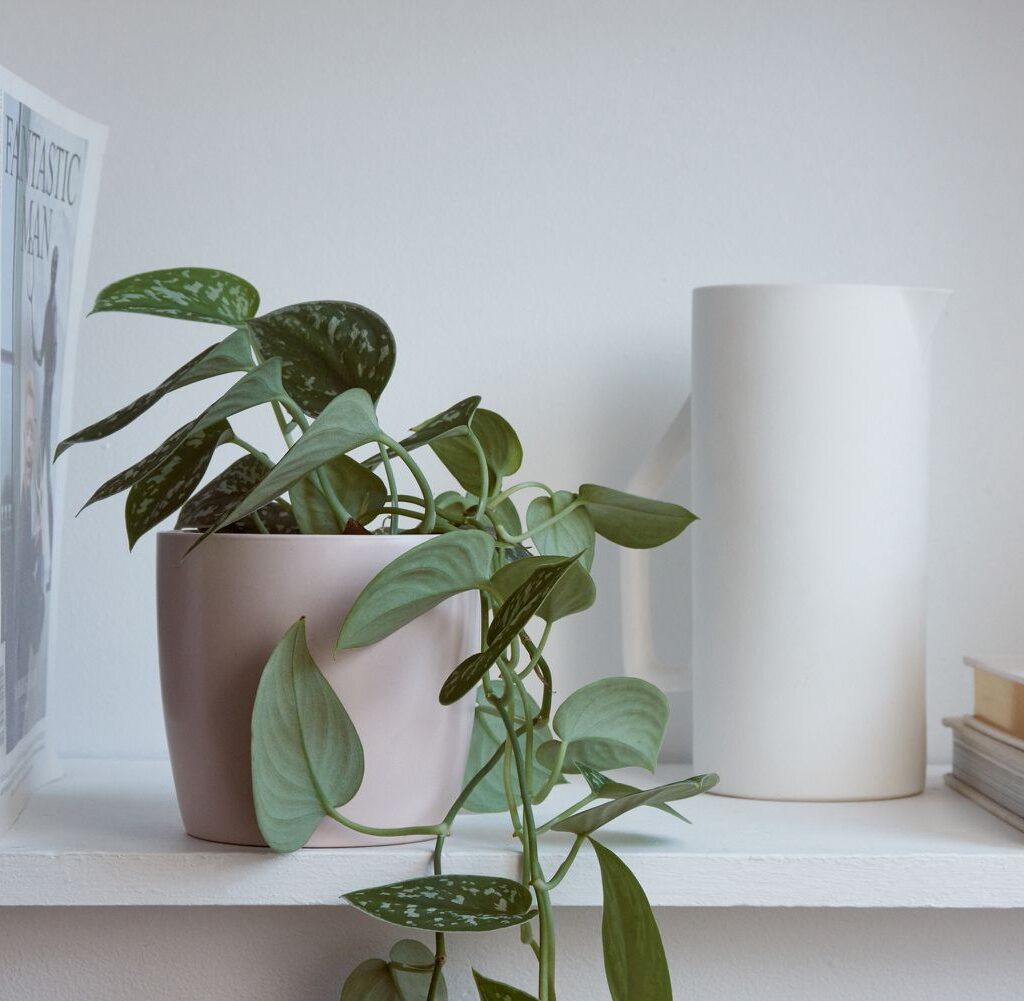
Pothos & Philodendron
- Cut just above a node.
- Remove up to one-third of the vines for bushier regrowth.
Fiddle Leaf Fig
- Prune damaged or drooping leaves.
- Cut back branches to control size.
Spider Plant
- Snip off brown leaf tips.
- Remove plantlets (baby plants) to encourage main plant health.
Snake Plant
- Cut dead or damaged leaves at the soil line.
- Remove entire leaves only if necessary.
Succulents
- Remove dead or dried lower leaves.
- Snip off elongated stems to encourage compact growth.
Common Pruning Mistakes to Avoid
Over-pruning — never remove more than one-third of the plant at once.
Using dull, dirty tools — can tear plant tissues and spread disease.
Pruning at the wrong spot — always cut just above a node or at the leaf base.
Ignoring signs of pest damage — early pruning helps stop infestations from spreading.
Heavy winter pruning — most houseplants grow slower in winter and may not recover quickly.
After-Pruning Care
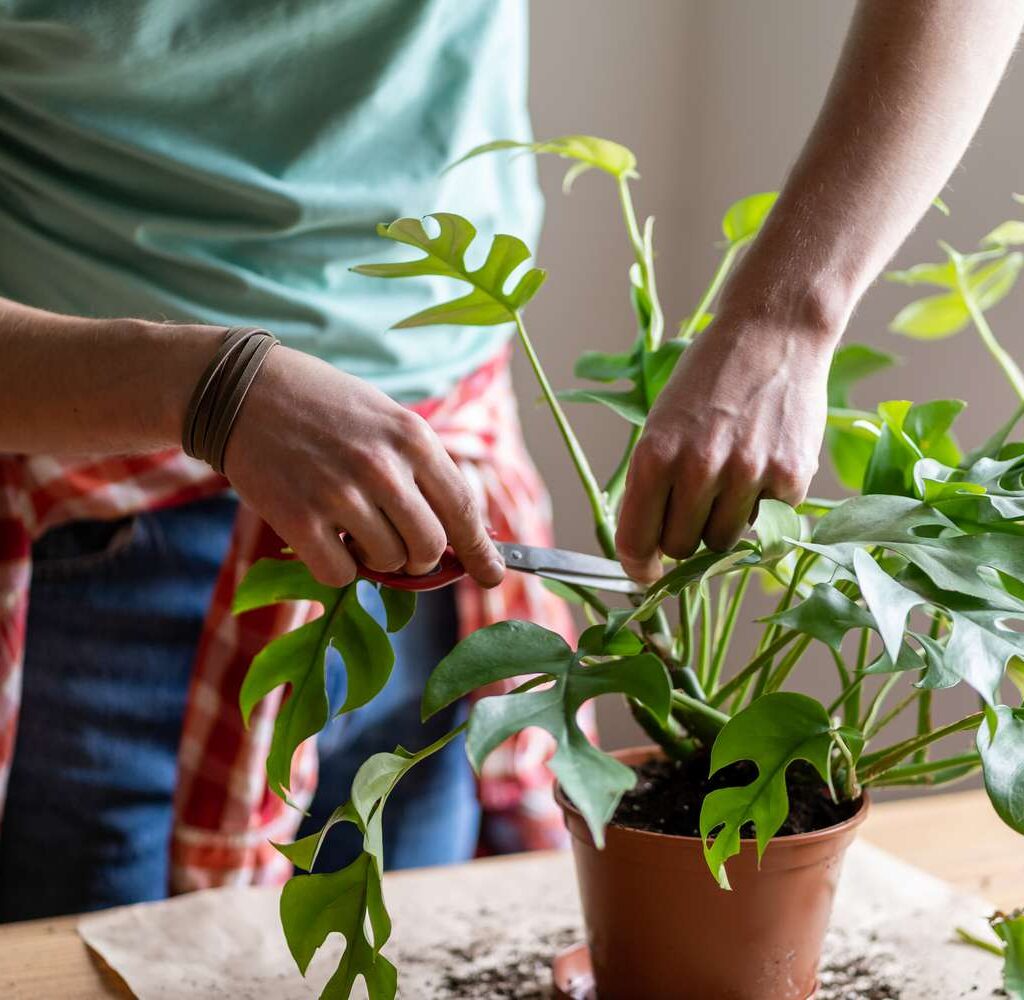
Pruning can stress plants temporarily, so give them a little extra care afterward:
✔ Water lightly, avoiding soggy soil.
✔ Keep plants in bright, indirect light.
✔ Avoid fertilizing for 1–2 weeks after heavy pruning.
✔ Wipe down leaves to remove dust and improve photosynthesis.
✔ Monitor for signs of new growth within 2–3 weeks.
Pro tip: Propagate healthy cuttings in water or soil for new plants!
Benefits of Regular Pruning
✔ Keeps plants healthy and disease-free
✔ Encourages fuller, more attractive growth
✔ Maintains desired size and shape
✔ Extends plant lifespan
✔ Reduces the risk of pest problems
✔ Creates opportunities for propagation
Regular pruning is one of the simplest yet most impactful ways to boost your houseplant’s health and beauty.
Final Thoughts
Pruning houseplants might seem intimidating at first, but with a little practice, it becomes a satisfying and rewarding part of plant care. By removing dead, damaged, or unruly growth, you allow your plants to thrive, grow fuller, and stay healthier in your home.
So grab your shears, show your plants some love, and let them flourish with these easy, practical pruning techniques!

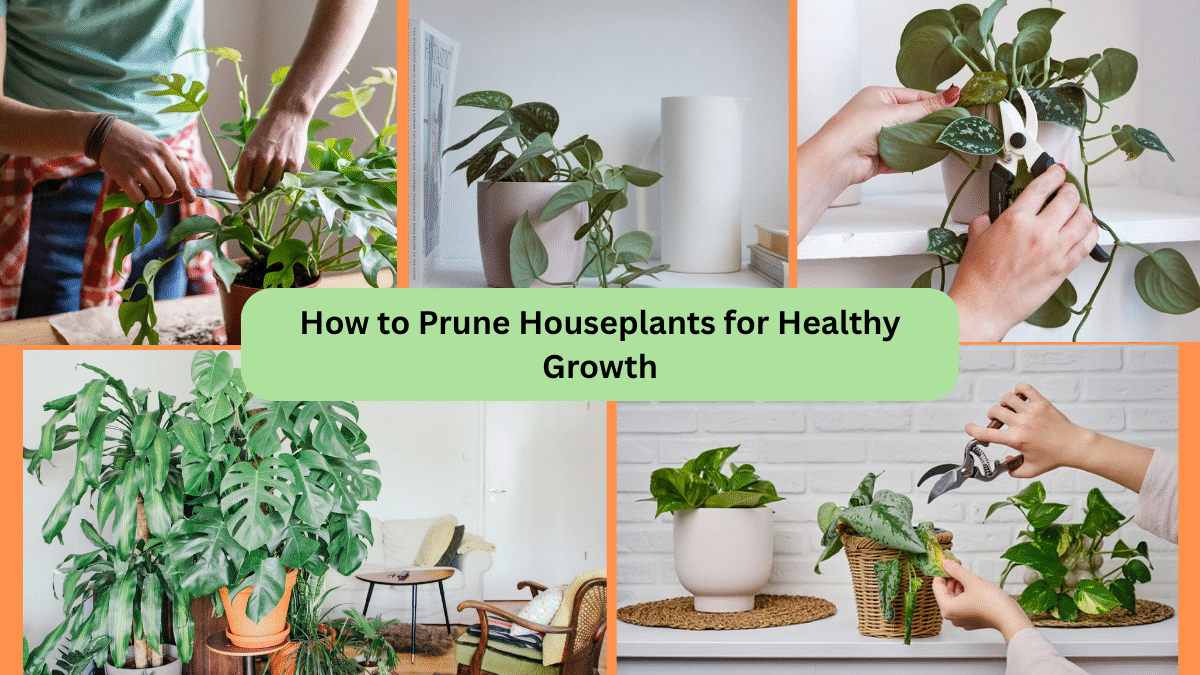
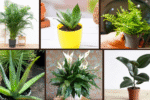
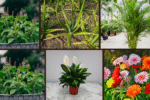


Leave A Comment